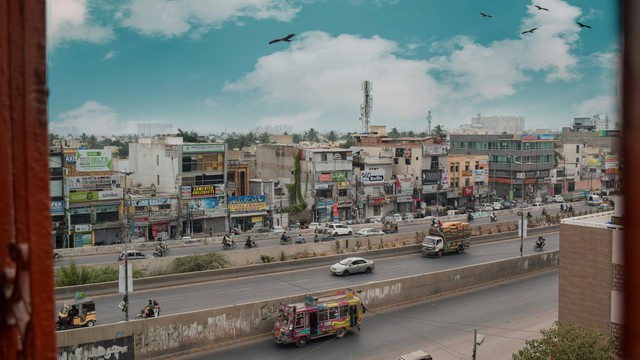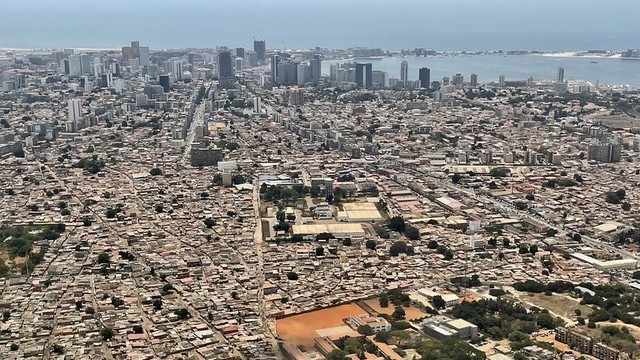Building resilience to climate change through slum upgrading – the case of Jaga Mission in Odisha, India
Citing the case of Jaga Mission, guest blogger Antarin Chakrabarty suggests that high-quality, community-driven slum upgrading programmes can contribute to climate change resilience.


A slum dwellers' association meeting takes place inside a Parichaya micro-activity centre (Photo: Antarin Chakrabarty)
The Jaga Mission’s state-wide slum upgrading/empowerment programme is recognised as one of the largest slum land titling and upgrading initiatives in the world. But until now there has been no discussion about the possible significance of the work in building resilience to climate change.
On the front line of climate impacts
Odisha has a 480km coastline and faces the multiple natural hazards of cyclones, floods, heatwaves and drought. Although the state has done very well in mitigating the impact of cyclones in the last decades, its Climate Change Cell (PDF) observes that the frequency and intensity of tropical cyclones in Odisha are likely to rise.
With about 17% of its population (approximately 7 million people) living in urban areas, Odisha is not among the most urbanised states of India but its decadal urban growth rate has increased substantially to around 27%. Census data and Jaga Mission surveys show that small and medium towns in the state are growing at a faster rate than the larger cities, with 25% of the total urban population now residing in slums.
These residents are often the worst affected by extreme weather events given the vulnerable location of their settlements, poor housing quality and absence of basic infrastructure. But any serious effort to address the challenge of slums can simultaneously address the challenge of climate resilience.
Such a connection is not simply imaginary. In my previous blog I described how Jaga Mission successfully adapted to the challenges of the COVID-19 pandemic to set up the Urban Wage Employmen Initiative to provide immediate support to migrant and informal labourers whose livelihoods had been lost.
This provided employment in well-planned, labour-intensive public works projects within the mission. The fact that this scheme has become the primary implementation mechanism of Jaga’s slum upgrading phase, shows the mission’s ability to mainstream and institutionalise innovative responses to sudden challenges.
The importance of universal coverage
A defining characteristic of Jaga Mission is its universal coverage of all 2,919 slums in all 114 cities and towns of the state. According to Jaga surveys, this covers 412,000 slum families – close to two million people.
Many of these cities lie in areas at high risk from climate change. The universal coverage allows it to address vulnerabilities in slums in cities located in all types of hazard.
The first phase focused on granting land rights to slum dwellers based on legislation enacted specifically for that purpose, the Odisha Land Rights to Slum Dwellers Act of 2017 (PDF). This involved a massive data gathering and community mobilisation exercise using high resolution drone surveying of slums, creating geographic information systems (GIS) databases, undertaking household surveys and constituting Slum Dwellers Associations (SDAs) in each slum.
As a result Odisha may be the only region in the world to have a complete, high resolution spatial database of all its slums, as well as participatory organisations at individual slum level.
The high cyclone damage risk zone contains 1,407 of the slums in 50 cities (see the map below). These are home to 188,754 families (almost a million people). Among these, 29,717 families living in 223 slums in 19 cities, are also vulnerable to severe flooding.

The spread of Jaga Mission cities located in a very high cyclone risk zone. Map prepared using the Odisha Disaster Management Authority map and OpenStreetMap (Image: Antarin Chakrabarty)
Many of these slum dwellers received land rights in the pilot months of the first phase of the mission, which focused on coastal districts. Among the first beneficiaries were the members of the Nolia migrant fishing community, whose settlements located in high cyclone risk zones are among the poorest and most deprived in the state.
From land rights to slum upgrading
In October 2020, the second phase of the mission was initiated, focussing on slum upgrading through nine interventions: piped water supply, storm water drainage, individual toilets, electricity, street lighting, street paving with interlocking paver blocks (to facilitate rainwater percolation), creation of open spaces with groundwater re-charge structures, children’s play areas, and micro-activity centres called Parichaya that have become hubs for community activities.
Government subsidies are also made available to slum dwellers to construct new houses made of permanent materials.

The spread of Jaga Mission cities located in a flood risk zone: 29,717 families living in 223 slums in 19 cities are vulnerable to severe flooding. Map prepared using the Odisha Disaster Management Authority map and OpenStreetMap (Image: Antarin Chakrabarty)
A total of 550 slums in 28 cities were upgraded across the state in the first six months of the pilot phase, despite the disruptions caused by the second wave of the pandemic.
Jaga aims to upgrade a thousand slums each year and complete the upgrading of all slums within three years. Comprehensive upgrading (as all upgraded slums get the nine interventions noted above) on such a massive scale and at speed can significantly improve the resilience of Odisha’s cities to respond to multiple types of extreme weather events.
Control rests with the residents
A significant innovation is that the slum dwellers themselves, through the thousands of SDAs and women’s self-help groups, are the main implementation partners of the government in the upgrading process – instead of private contractors. This makes the involvement of slum dwellers vital to the success and sustainability of Jaga Mission.
The upgrading work is only considered complete when the SDA gives written confirmation that all nine interventions mentioned above have been completed.
This partnership also ensures the slum dwellers’ knowledge of local climatic conditions is accounted for in the planned works. For example, the Parichaya is normally designed as an open structure without walls to facilitate community interaction. However, at the request of a Nolia community living on the coast, the Parichaya in their slum is being constructed as a walled structure so that it can also function as a cyclone shelter.
The significance of Jaga Mission to resilience to climate change needs to be studied in much greater detail and across multiple parameters. However, it has clearly begun to show that the issues of urban inequality and vulnerability to climate change can, and perhaps should, be tackled simultaneously.
This blog draws on the Odisha Climate Change Action Plan 2018-2023 (PDF) by the government of Odisha. It also builds on the blog COVID-19, JAGA Mission and the value of already existing solutions by Antarin Chakrabarty.



